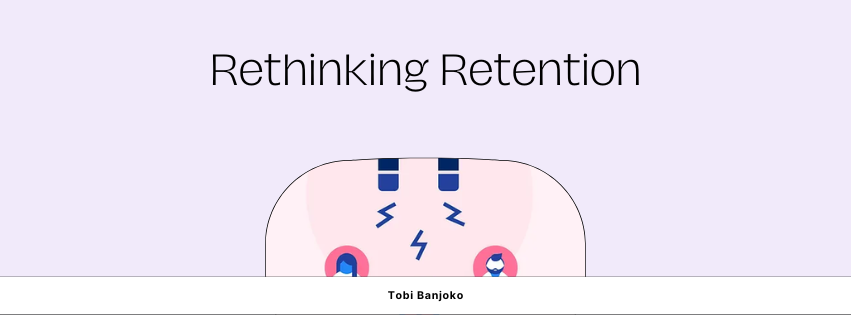Improving Retention

-
Written by
dajibademgmail-com
-
Category
Uncategorized
-
Date
May 2, 2024
Customer acquisition is one of the most popular metrics startups use to determine growth, growing the number of new customers by x number month on month is a key metric that all tech companies track, and rightly so.
New customers help increase a company’s market share, revenue and scale. But this can be likened to fetching water in a leaky bucket if retention is not given an almost equal priority. Customer retention refers to activities that ensure your acquired customers keep coming back for more.
Some customer acquisition and retention marketing stats:
- Increasing customer retention by 5% can increase profits from 25-95%
- Loyal customers are five times as likely to repurchase, five times as likely to forgive, four times as likely to refer, and seven times as likely to try a new offering. Source
- Acquiring a new customer can cost 5x retaining an existing one.
- According to the CallMiner Churn Index 2020, US companies lose $136.8 billion per due to avoidable consumer switching.
Why do customers churn ?
53% of users churn due a poor onboarding, bad relationship building, or poor customer service according to Retently

And how do we fix it?
A few recommendations;
- Data & Measurement: The first step to improving anything is to measure it. Measure how many of your users return to your product daily, weekly, monthly, quarterly, or even longer depending on your product or service type. You have to know your current churn rate to work up from there. Churn rate can be calculated as follows;

Your retention rate is simply the inverse of your churn rate, so if your rate is 35% then your retention rate is 65%. Once you know this rate, the next step is to improve it.
How do we do that? First step is with the product.
- The Product: The functionality of the product and the ease of use are very important factors in whether it becomes sticky for your customer. The most sticky products you know are first functional, and then offer a superb user experience, think Netflix, Uber, Wise, and Apple.
A lot of deliberate effort has to go into improving the product experience, once you’ve found the key feature(s) that the bulk of your customers love to use, the goal should be to make it easy for everyone who comes in contact with your product through the same experience as quickly as possible.
Improving the onboarding experience is one key way of ensuring you’re retaining the customers you acquire, especially at the early stages of your company. I wrote more about it HERE
Building ‘stickability’ into your product also helps with retention, platforms such as Canva, Slack, Asana, and Trello have good retention rates because once you start to use them, a lot of your data and files are within the system, and you also have to share links and invite others to as well to get the best out of them, this makes your total investment in the product a lot higher and the chance of abandoning lower.
- Customer Experience: Customer retention rates increase by 5% for every 1% increase in customer satisfaction (Source: Survey Sparrow).
Frequent check-ins should be a key part of your business process to ensure customers constantly get value from your product and to assist them where there may be lapses.
Your customer experience and success teams should be adequately equipped to support customers throughout their journey.
For subscription businesses, one trap to avoid is abandoning customers who have made long-term commitments, e.g. quarterly, or yearly payments. Many businesses only remember their customers when it’s time for renewals and it’s usually too late already as the decision to cancel will likely have been sealed.
Customer experience can make or mar your business, a bad experience for one customer can lead to a review that will be the dealbreaker when read by a prospective customer.
- Cancellation Deflection & Offers:
If haven’t done excellently well at the above stages and your customers are already contemplating canceling, some products allow you to engage your customers at that point. With this, you can provide incentives that may keep them with your business for longer. The first step is usually to understand the reason for canceling and offer a solution right there and then. Some of the popular reasons include; a key feature they need and you don’t currently provide, budget issues, the business got acquired, they just no longer need the product you offer, etc
Some examples of such tools include Chargebee Retention, ChurnZero, CustomerGauge. In addition to gathering data on cancellation reasons, these tools allow you to map journeys and offers depending on the cancellation reason(s) the customer chooses. For example, if a customer wants to cancel because they aren’t finding much value in the product for their business, you may prompt them to book a call with an expert to help them make the best use of the product.
After you’ve done all of the above, customers may still choose to cancel, then comes your final card –>
- Win-Back Campaigns: After a period of inactivity/cancellation, a win-back campaign may be necessary to get your customers back. These campaigns are designed to re-engage your customers, introduce new features or updates, and offer incentives to win them back. I recommend sending 2-5 emails after 3 months of cancellation or churn because that’s just enough time for them not to have gone cold, and for you not to seem desperate.
The timing between the emails should be spaced based on the action you expect the customer to take and how long it may take to perform such actions given the decision-making process that may be involved. For example, a B2C customer can get a win-back email and make a purchase the same day, while a B2B customer may need to get other stakeholders within their company involved.
These campaigns should be automated to get the best results, so you don’t manually have to track when customers have churned and for how long.
Some examples of win-back campaigns for your inspiration can be found here
Loyal customers are worth up to 10 times their initial purchase
I hope these ideas help you retain your customers, increase your LTV, and help you build a healthier business.
#Startup #Retention #Growth #Churn #Revenue #Marketing #B2B #SaaS

